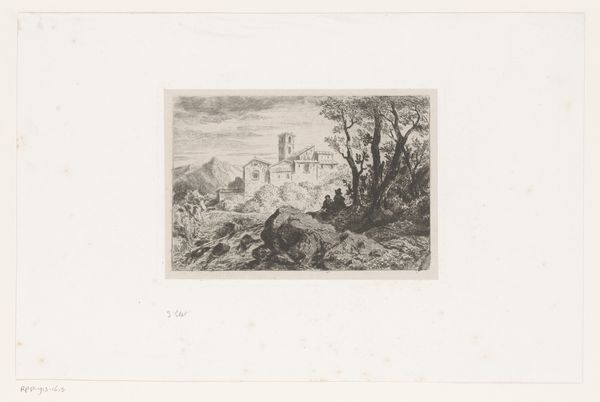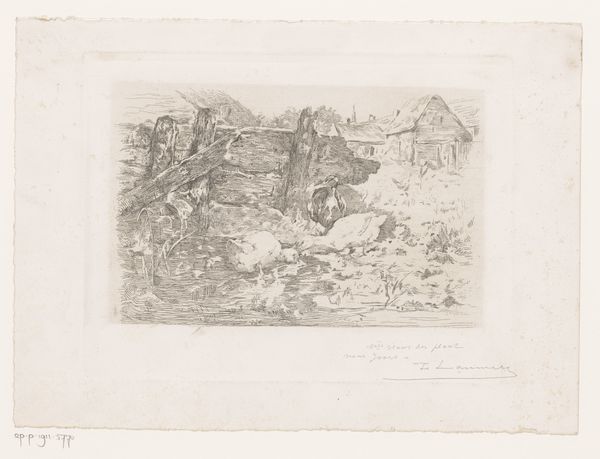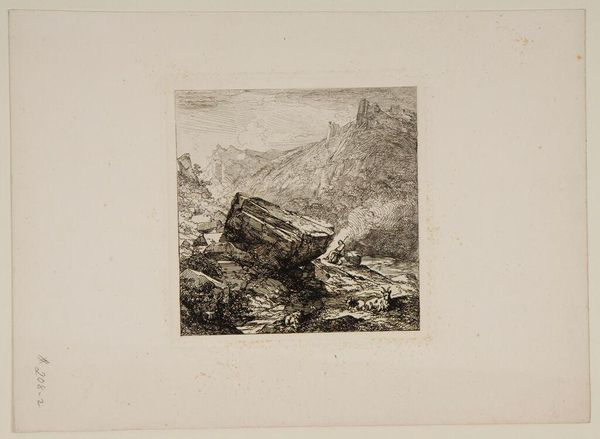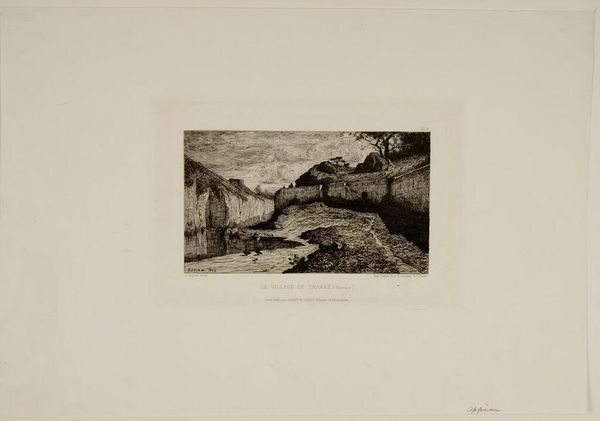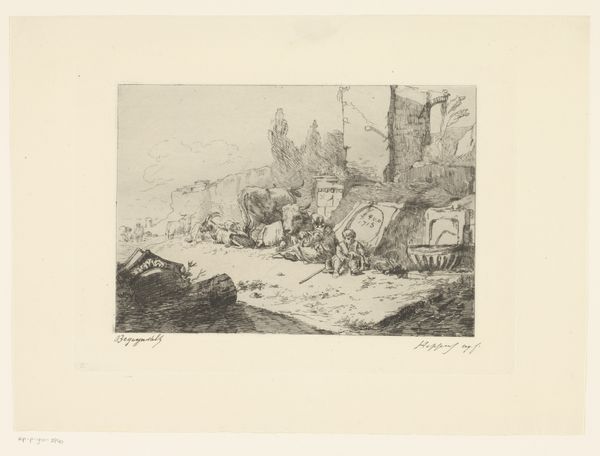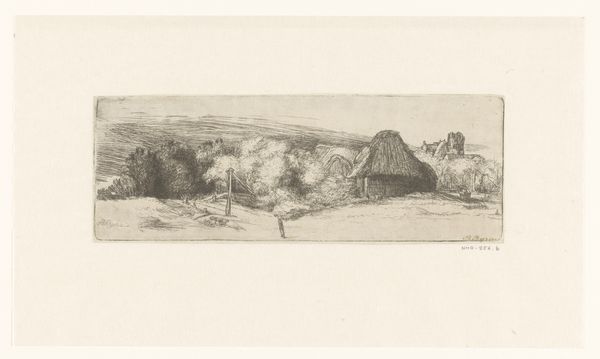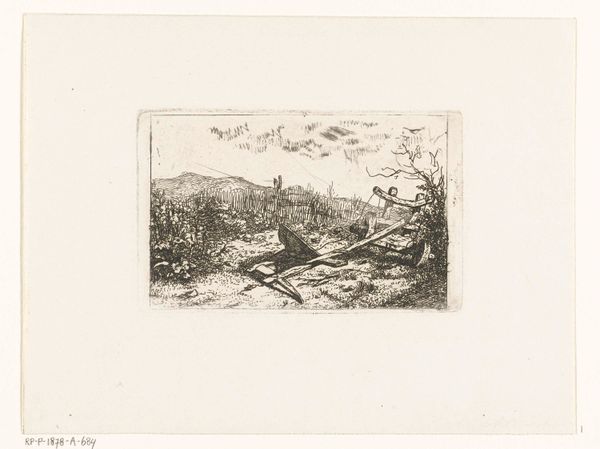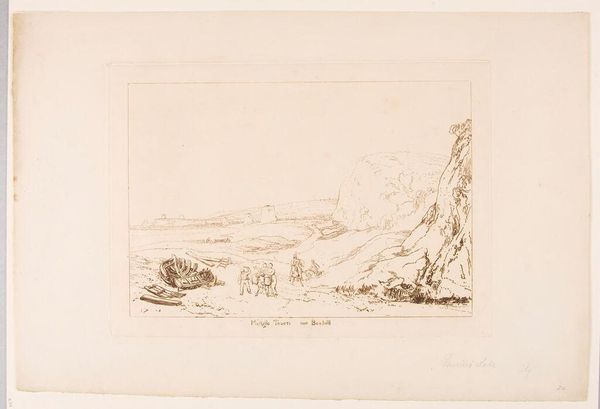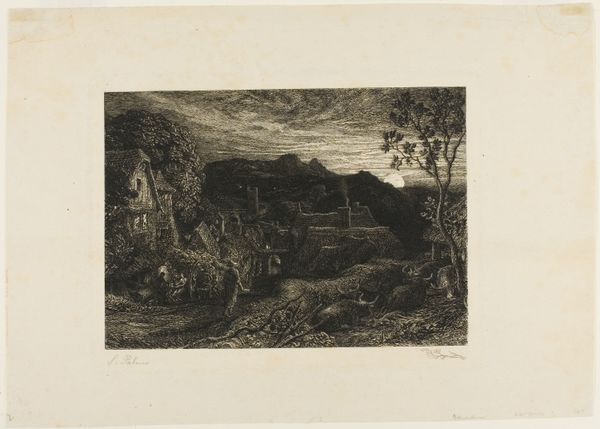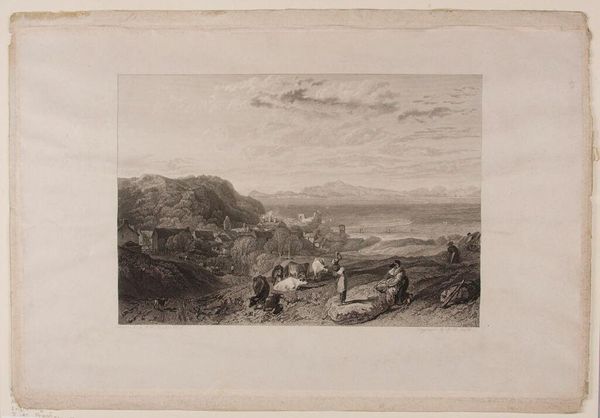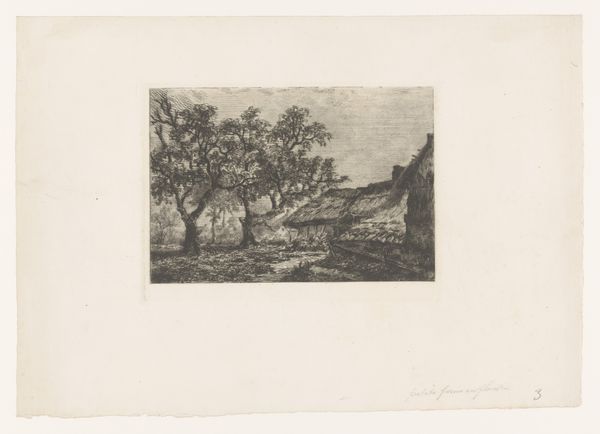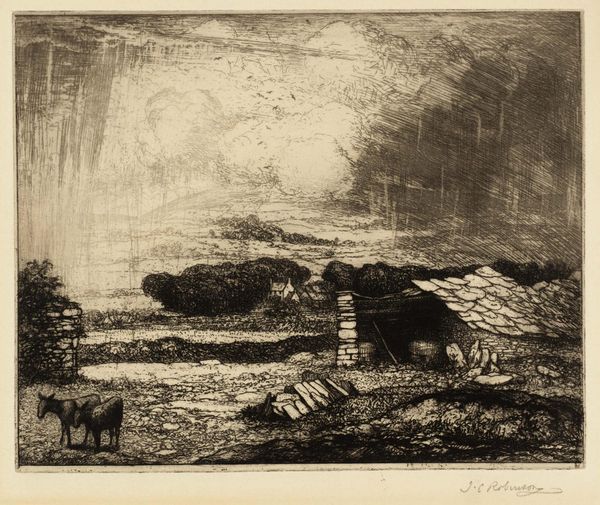
Copyright: Public Domain: Artvee
Curator: This small etching, titled *Fear*, was created in 1866 by Odilon Redon. The stark black-and-white imagery feels almost biblical, in scale if not in subject. Editor: It does evoke a certain drama, doesn't it? My first impression is that it feels isolated, almost claustrophobic, despite the implied vastness of the landscape. The figure on horseback is dwarfed. Curator: Precisely! Consider the weight of that isolation for a moment. Redon, often linked with symbolism, frequently explored psychological landscapes through his art. What meaning does a rider hold within such a hostile territory? What symbols are brought to your mind when looking at it? Editor: It brings to mind notions of vulnerability within larger, perhaps incomprehensible, historical forces. Is the horseman fleeing or seeking? And who or what generates their fear? It might be a comment on how rapidly society shifted in response to science during the second empire in France. Curator: Your analysis touches upon important socio-political issues surrounding the context in which this was created. Yet for me, it transcends simple historical documentation. Note the strategic use of darkness—a prominent motif in Romantic and Symbolist works. Does this artistic style have an impact on viewers of the 21st century? Editor: Yes. Redon used his art to deal with larger social phenomena. These ranged from increasing urbanization and secularization, all the way to the industrialization of France in particular! So it can't just be seen as 'stylistic.' What could those symbols mean to contemporary audiences? The sheer drama certainly retains its grip, irrespective of historical knowledge, because who hasn't experienced moments where our actions are motivated by external things that are difficult to change. Curator: Ultimately, isn't that what gives art its lasting value—the ability to reflect, and resonate with, enduring human experiences across shifting cultural landscapes? This little piece allows us to see history anew and ponder a collective condition in light of personal, perhaps nameless anxieties. Editor: Absolutely. And perhaps, understanding how socio-political dynamics were felt so deeply on a personal level might inspire reflection upon how the 'fear' of modern events are manifesting through us today. It serves to humanize large impersonal narratives in order to spark conversations among broader audiences.
Comments
No comments
Be the first to comment and join the conversation on the ultimate creative platform.

